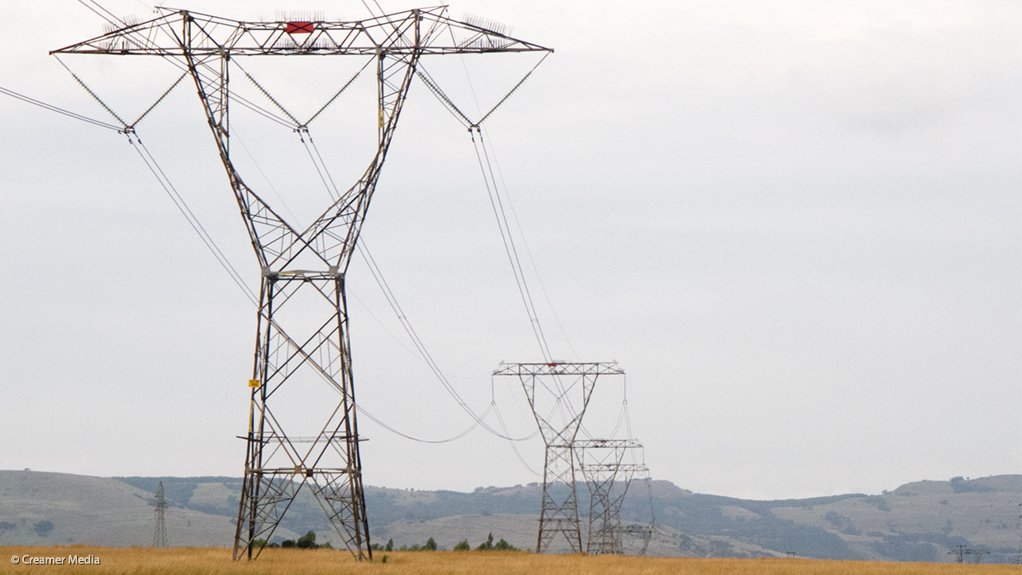Securing ringfenced revenue for NTCSA seen as key first step for tackling R390bn grid backlog
Ringfencing revenue for the National Transmission Company South Africa (NTCSA) is regarded as a crucial short-term step for ensuring that the newly operationalised Eskom Holdings subsidiary is placed on a firmer financial footing to begin dealing with the estimated R390-billion grid infrastructure backlog.
However, complete financial and operational unbundling from Eskom, together with further tariff reform, is still required to fully derisk the business and position it to play its central role in facilitating South Africa’s transition to an electricity system that does not undermine the country’s export competitiveness as key trading partners begin implementing carbon taxes.
This view was expressed by various participants at a Presidential Climate Commission (PCC) roundtable convened at the JSE to deliberate on financial models that could unlock grid investment, including by the private sector.
Eskom has hitherto made a single allowable-revenue application to the National Energy Regulator of South Africa (Nersa) for its generation, transmission and distribution businesses.
Although these applications outline specific requests for the various aspects of the business, there has been a lack of transparency in how that revenue has been apportioned by the vertically integrated utility, which has resulted in revenue allocated to transmission being redirected for other purposes.
NTCSA interim CEO Segomoco Scheppers recently confirmed that while Eskom had been granted R44-billion for its transmission business during the five-year tariff period for the 2018 to 2022 financial years, it had received only R19-billion after a board reprioritisation exercise.
The balance was redirected to Eskom Generation for its much-delayed and over-budget build programme.
Following its operationalisation on July 1, the NTCSA would now be making its own allowable revenue application to Nersa, which is gearing up to begin its adjudication of submissions for the upcoming three-year tariff cycle, which will begin on April 1, 2025.
It has been reported that Eskom will be seeking allowable revenue of R446-billion for 2025/26, which would translate to a hike of more than 36% for direct customers if approved.
However, Nersa is expecting the application – which will continue to be based on the multiyear price determination methodology after the regulator’s abortive attempt at overhauling the way tariffs are set – to reflect the unbundling under way at Eskom, which has been led by the separation of NTCSA.
Speaking at the PCC event, Scheppers highlighted the need to ensure that the NTCSA had dedicated revenue for both its operations and to roll-out the Transmission Development Plan (TDP).
The TDP continued to provide the grid-investment roadmap for the country, despite a growing acceptance that it needed updating.
“The question of the tariff is one of the issues that we believe we need to grapple with now,” he said, describing it as a difficult problem but also a “precondition” for implementing the grid expansion.
“So, we have to address how we secure these revenue streams that fundamentally underpin the necessary investments.”
In a presentation at the PCC event, Meridian Economics MD Grové Steyn argued that there was a need to redesign the current “dysfunctional” transmission tariff structure and increase tariff levels to be cost reflective.
“Eskom’s regulated transmission tariff levels currently result in negative returns, and no utility or infrastructure firm is going to finance new assets if that remains the case.”
Moving to cost-reflective transmission tariffs was, thus, necessary to support both NTCSA projects, as well as any possible future Independent Power Transmission (IPT) investments by the private sector.
BACKLOG IS TWICE AS BIG
However, Steyn also called for an urgent revision to the TDP, arguing that it failed to reflect the full scale of the backlog.
The investment required, he said, was nearly twice as large as that outlined in the TDP, which focused primarily on the backbone network and did not fully account for the collector networks needed to evacuate power “which is almost at the same level of magnitude as the transmission investment requirement”.
The power grid needed to be expanded to connect more than 5 GW of renewables a year for the next 25 years, he argued.
Despite the scale of the backlog being underestimated in the TDP, Steyn noted that the NTCSA was still not building new capacity either at the rate outlined in the plan or in line with what the system required.
South Africa, thus, required private investment and capacity to complement the investments being undertaken by the NTCSA.
Steyn suggested that South Africa should pursue public procurement of IPT investment through a dedicated procurement unit established along the lines of the Independent Power Producer Office.
Newly appointed Electricity and Energy Deputy Minister Samantha Graham confirmed that various procurement models had been considered and that progress was being made, together with the Development Bank of Southern Africa, to prepare for procurement implementation on a build, own, operate and transfer basis.
Department of Electricity and Energy lead economist Shaakira Karolia added that work was under way to ensure that the legal and regulatory hurdles were removed to enable the IPT procurement.
In addition, National Treasury chief director Ravesh Rajlal revealed that a credit-guarantee mechanism was being designed together with the World Bank to help derisk the projects in a way that also took pressure off the fiscus.
However, Steyn argued that public procurement should be complemented by an “IPP-backed grid collector model” that built on the current self-build model used to enable IPPs to connect to the grid.
Such an approach could accelerate the expansion of the grid beyond that which is possible based on the balance sheets and execution capacity of the NTCSA and the State alone.
“The objective of this approach is to set up the policy and regulatory framework that enables IPPs to collaborate in procuring 132 kV and 400 kV power evacuation capacity, including associated substations from IPT companies,” he said.
There was also an eagerness for the NTCSA and future IPT companies to access part of the $11.6-billion in concessional funding extended by various developed governments to South Africa’s Just Energy Transition Investment Plan (JET-IP).
JET-IP Project Management Unit financing manager Neil Cole argued that, while it could take some time to facilitate IPT procurement, there was potential to use the concessional loans for transmission projects.
He urged the NTCSA to make the necessary applications to the National Treasury for an exemption from the current moratorium on Eskom Holdings and its subsidiaries from taking on new debt in order to enable it to potentially leverage the concessional finance on offer.
Article Enquiry
Email Article
Save Article
Feedback
To advertise email advertising@creamermedia.co.za or click here
Comments
Press Office
Announcements
What's On
Subscribe to improve your user experience...
Option 1 (equivalent of R125 a month):
Receive a weekly copy of Creamer Media's Engineering News & Mining Weekly magazine
(print copy for those in South Africa and e-magazine for those outside of South Africa)
Receive daily email newsletters
Access to full search results
Access archive of magazine back copies
Access to Projects in Progress
Access to ONE Research Report of your choice in PDF format
Option 2 (equivalent of R375 a month):
All benefits from Option 1
PLUS
Access to Creamer Media's Research Channel Africa for ALL Research Reports, in PDF format, on various industrial and mining sectors
including Electricity; Water; Energy Transition; Hydrogen; Roads, Rail and Ports; Coal; Gold; Platinum; Battery Metals; etc.
Already a subscriber?
Forgotten your password?
Receive weekly copy of Creamer Media's Engineering News & Mining Weekly magazine (print copy for those in South Africa and e-magazine for those outside of South Africa)
➕
Recieve daily email newsletters
➕
Access to full search results
➕
Access archive of magazine back copies
➕
Access to Projects in Progress
➕
Access to ONE Research Report of your choice in PDF format
RESEARCH CHANNEL AFRICA
R4500 (equivalent of R375 a month)
SUBSCRIBEAll benefits from Option 1
➕
Access to Creamer Media's Research Channel Africa for ALL Research Reports on various industrial and mining sectors, in PDF format, including on:
Electricity
➕
Water
➕
Energy Transition
➕
Hydrogen
➕
Roads, Rail and Ports
➕
Coal
➕
Gold
➕
Platinum
➕
Battery Metals
➕
etc.
Receive all benefits from Option 1 or Option 2 delivered to numerous people at your company
➕
Multiple User names and Passwords for simultaneous log-ins
➕
Intranet integration access to all in your organisation





















